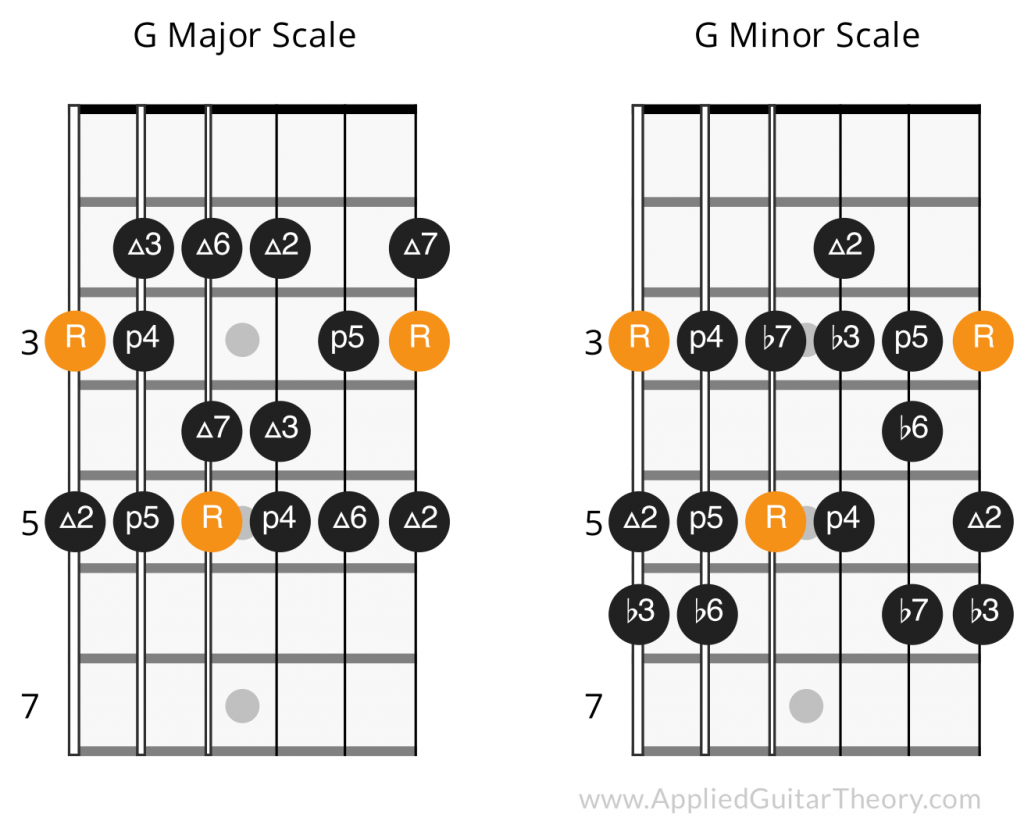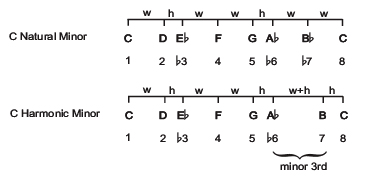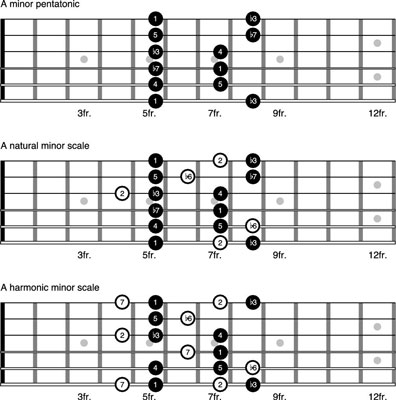
In the last couple of lesson we looked at the major scale in detail. We looked at how it is constructed and how to work out how to play a major scale in any key. This lesson we will take the same approach with the minor scale. Obviously, it is important that you understand how a minor key works, as well as major keys, as you won’t always be playing in a major key.
The minor scale is similar in construction to the major scale, and many of the ground rules also apply to the minor scale. The difference between the two is that some of the notes have been altered to change the scale from major to minor. There are many variations of the minor scale, but this lesson we will look at how the natural minor scale is constructed, as this is the standard minor scale.
The thing that all minor scales have in common is the interval between the first note (root note) and the third note. In any minor scale, this interval is a tone and a half (three frets), giving you a minor 3rd. It is this interval that gives the scale it’s minor characteristic, just as in the major scale the interval of two tones between the first note and the third note gives that its major characteristic. If we then go on to drop the 6th note by a semi-tone (to become a ‘minor 6th) and also the 7th note by a semi-tone (to become a ‘minor 7th) we end up with the natural minor scale.
Below are two diagrams that show you the comparison between major and minor scales in terms of note values:

So, above you can see how the note values in the natural minor scale differ to those of the major scale. However, it is the intervals between each note, and the step pattern these create, that give the scale its sound and also allow you to easily work out the scale in different keys. Below is a diagram that shows you the intervals between each note in the natural minor scale:

As with any scale, it is these intervals between each note that give the natural minor scale its sound. However much you transpose this scale, the step pattern remains the same. You can use this as a formula to work out the scale in any key. Below is the step pattern, or formula, that you need to remember in order to be able to work the scale out:

For example, if you take this formula and start from an A, you’ll end up with an A natural minor scale. Simply start from an A, step up a tone, then up a semi-tone, then a tone and so on until you reach the end of the formula. If you get the scale correctly you should end up with the notes below:

You should notice that these notes are exactly the same as the notes in the C major scale. You should also see that they are in the same order, except this time starting from the A, not the C. This is because A, being the 6th note of the C major scale, is the ‘relative minor’ of C major.
Every major scale has its own relative minor, the 6th note of the scale. If you play a natural minor scale starting from this note you will be playing the ‘relative minor’ scale in relation to the major scale you started from. In practical terms, this means that each major scale shares the same notes as a natural minor scale starting from it’s 6th note. Simply start playing the scale from the 6th note, treating this note as the root, and you will end up with a natural minor scale in that key. You can also reverse this rule. If you know a minor scale and want to find it’s relative major, you can start the scale from the 3rd note treating that as the root, and you will have a major scale in the key of that note.
image credit – Camp Castawa




